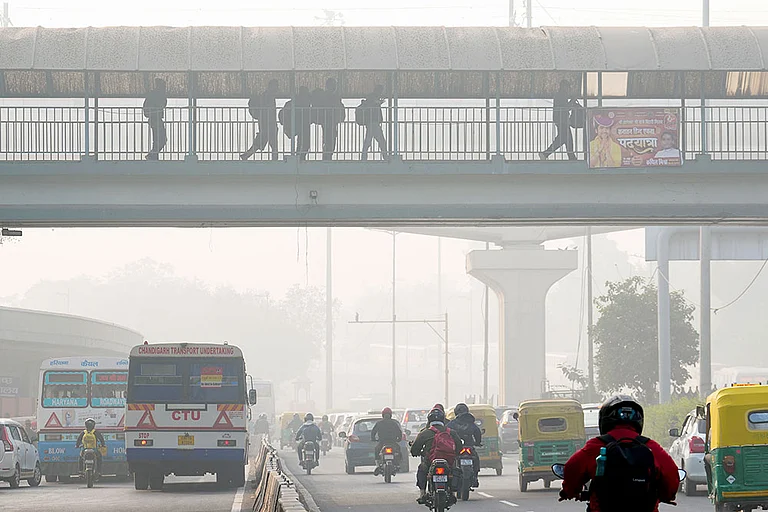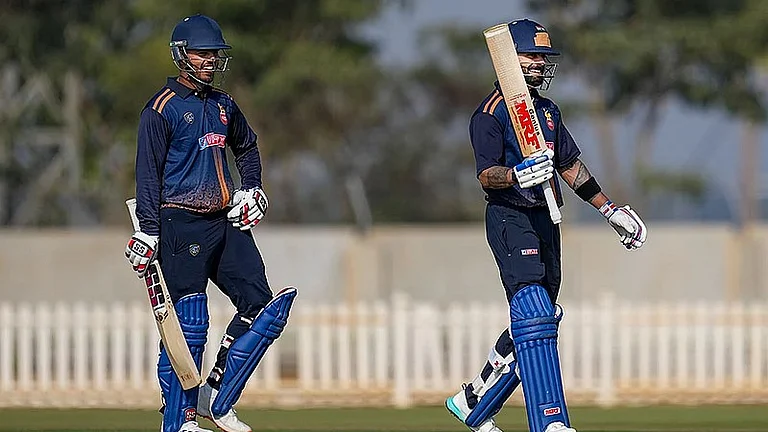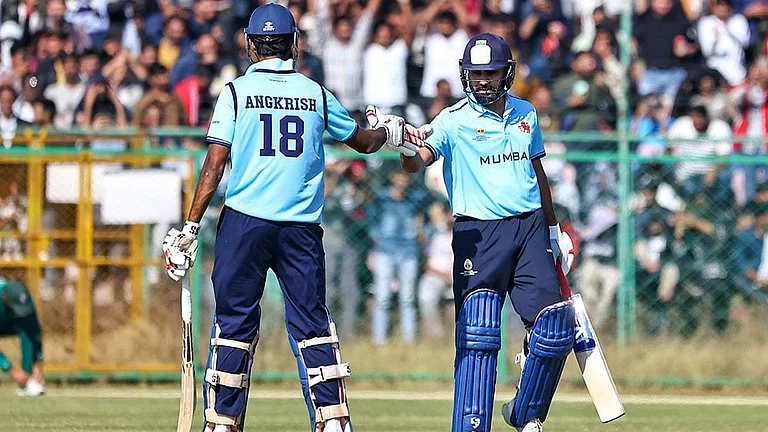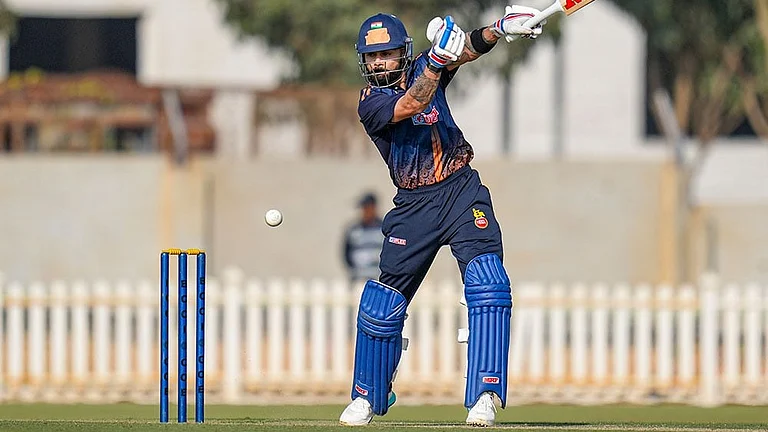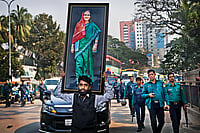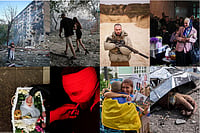The unfinished business of the 1971 liberation struggle has come back to haunt Bangladesh 40 years after it was created with the blood, sweat and tears of martyrs. The fact that Sheikh Mujibur Rahman, Bangladesh’s iconic and much-loved first prime minister, was gunned down before he could carry forward the legacy of the struggle has resulted in a deeply divisive society. Today, the fight is for the soul of a nation: between those who want a modern democracy and those who believe religion is at the heart of Bangla nationhood and that its existence needs to be defined under a strict, orthodox, Wahabi code.
Those who have brought this fight to the streets and challenged the government are not the usual conservative alliance of the Jamaat-e-Islami and the Bangladesh Nationalist Party. They are the supporters of Hifazat-e-Islam, popularly known as the Hifazatis, who are backed by the Jamaat and the BNP. (The BNP’s support comes not so much for ideological reasons but for political gains and to add to the discomfiture of its bete noire, the Awami League, ahead of the elections due by year-end.)
The Hifazatis—looming up as a regressive counter-force eager to stymie the spirit of Shahbag—are a frightening throwback to the Taliban of the late ’90s. The prototype was reared in the madrassas of Pakistan and brainwashed into believing they were the custodians of Islam who could restore the glory of an Islamic Caliphate. The copy, a shadowy coalition of a dozen or so groups of radicalised students, has been incubating in Bangladesh’s seminaries before striking out to intervene in the polity in a manner identical to that of the Taliban. One figure to whom the trail goes back is Maulana Ahmed Shafi, rector of one of Bangladesh’s most established Deobandi madrassas, Al-Jamiatul Ahlia Darul Ulum Moinul Islam of Chittagong, popularly known as the Hathazari Madrassa. He is also linked to mainstream fronts like the Islamic Oikya Jote, which has fought elections in alliance with the BNP on typical planks, like the opposition to a secular education model.
Like with the Deoband seminary, the Hathazari evinces a tension between what can be a plain school of orthodoxy and suspected links with extremist factions. The parallels with the Taliban should come as no surprise. For what the Hifazatis are trying in Bangladesh is not very different. It’s the same blend of madrassa students engaged in religious scholarship and those who can bring them out en masse to participate in street rallies and marches.
Half a million of them held a rally in Dhaka on April 6, with loud chants of “Hang the atheist bloggers”, accusing the ilk of insulting Islam and the Prophet. The Hifazat was a little-known outfit till their attack on a young blogger, Rajiv Haider, in February this year. Its base is in the 25,000 or so madrassas dotted across Bangladesh. The madrassa students are its stormtroopers, as it became evident on Sunday, May 4.
The demands in their 13-point charter are outrageous. They would go against the grain of any modern society, especially the one that the founding fathers of Bangladesh had envisaged in its Constitution. Their demands—tougher anti-blasphemy laws with death sentences for offenders, strict punishment for bloggers who ‘insult Islam’ and a move to prevent sculptures being erected in public places are an echo of the Taliban. Like the fanatic student militia of Afghanistan, they too want a ban on men and women mixing in public, scrapping of the government’s women development policy, stopping the “shameless behaviour and dresses” of young women and declaring Ahmadiyas as “non-Muslims”.
On Sunday, May 5, and in the early hours of Monday, this army of fanatics laid siege to Dhaka demanding that the Sheikh Hasina government give assurances that their 13-point charter would be accepted. After treating the Hifazatis with kid gloves for three months and trying to engage them in dialogue, the government had no option but to crack down when the mobs went berserk. The Hifazatis attacked the police, pelted stones, set fire to shops and set ablaze nearly a hundred government and private vehicles. When the authorities moved in, there were pitched battles between the Islamist student mobs and the police. The final toll: 27 deaths, including three policemen, and injuries to scores of people. The entire area around the Shapla Chattar, which houses one of the city’s main mosques, had turned into a battleground.
The media, at least some sections of it, showed some earnestness in their denunciations. An editorial in the influential English newspaper, The Daily Star, said “We are constrained to say that instead of showing respect to Islam and upholding its image, which the group claims is its intention, its gratuitous exploitation of religion has not only denigrated it but has also cast the group as one that adheres to violence rather than peace which is the very fundamental tenet of Islam.”
The important point is that the ethos of Bangladesh is strikingly different from orthodox Muslim countries. Even on the formal plane, it’s not an Islamic republic. The majority, while proud of their religion, are attuned to a moderate Islam and have till now resisted attempts to impose an extreme strain of the religion. Of course, at the heart of the present ideological battle is the Awami League regime’s attempt to punish those who worked against the freedom movement. The collaborators, guilty of heinous crimes during that period, have over the decades gone unpunished, mainly because the army that ruled intermittently in Dhaka protected these elements and sections of the society remained sympathetic to that strand.
As the wife of a slain general who had seized power in a coup, Begum Khaleda Zia has traditionally had support of large sections of the army. Today, much of that support base has dwindled, yet she still steadfastly criticises the Awami League’s attempts to bring closure to the victims of the excesses committed by pro-Pakistan razakars in 1971. The deep schism within the political establishment in Bangladesh was sparked off in January after the war crimes tribunal sentenced some Jamaat leaders to death for their role in the 1971 war. Since then, an angry Jamaat has staged several protests. The inspirational movement against this, steered by young students, sparked the scenes in Shahbag that called for “death to the collaborators”. The Hifazat has essentially come as a reactionary counter to that: what was called Bangladesh’s own reformist Arab Spring moment.
The Sheikh Hasina government now has the unenviable task of managing an existential crisis, in which it is a partisan, as the country goes into election mode. Many in Delhi believe it is not prudent for India to put all its eggs in one basket. Indeed, in recent years, India has reached out to the BNP too. In the coming months, the whole region will be keeping an eye on the developments in Dhaka. For an unstable Bangladesh could become a major headache for all concerned, including India.








